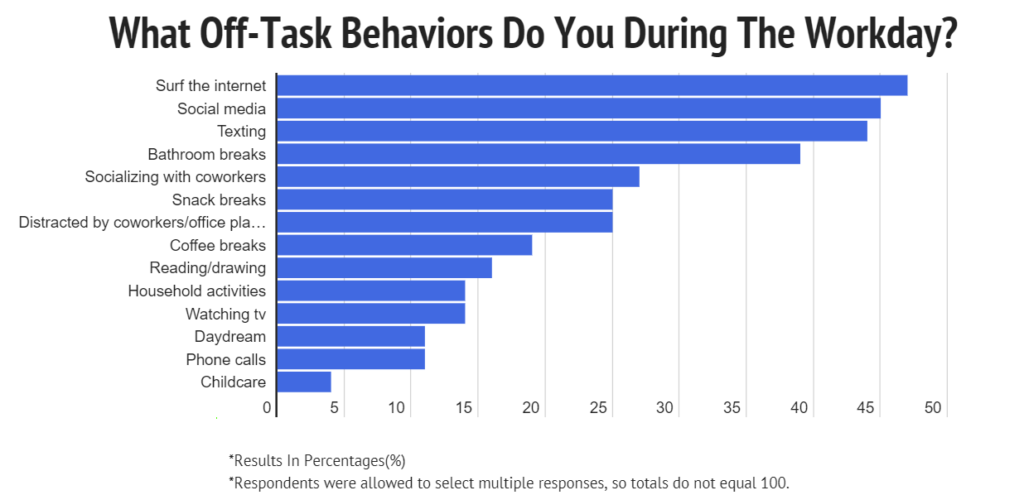Time tracking is a crucial tool for businesses seeking to improve staff productivity and business results, yet many businesses still rely on outdated practices like manual spreadsheets. In this blog post, we will explore the link between time tracking and worker productivity and see how effective time-tracking software and practices can benefit your business.
The Relationship Between Time Tracking and Employee Productivity
When your employees know how much time they’re spending on tasks, they can manage their time more effectively and be more productive. Let’s delve deeper into the connection between time management and productivity.
The Importance of Time Management
An objective assessment of the time spent completing tasks is key to maximizing productivity. Time management is an important skill, and accurately tracking the time to complete different tasks has many benefits both for the employee and the organization.
These benefits of implementing time tracking technology to improve productivity:
Identifying Time Wasted
Time tracking can identify time-consuming processes and activities, helping staff focus on essential tasks and optimize time usage. Tracking time also helps employees to have more autonomy over their work, because it eliminates the need for supervisors to keep checking in.
Managers can better understand how much time employees need to meet their responsibilities and assign tasks efficiently.
Goal Setting and Achievement
Time-tracking data can help workers set goals, track progress, and achieve targets, providing motivation and a sense of accomplishment. It also helps them stay focused by preventing multitasking. Tracking software can help employees be more mindful and aware of when they are dividing their attention by switching between one task and another.
Increased Visibility and Accountability
Time tracking promotes transparency and accountability, ensuring that workers adhere to productivity standards and work towards optimal time management. It also helps managers bill accurately—giving you visibility over the time your employees spend on tasks so you can plan labor costs better. You can optimize project management and understand how to plan the time assigned to each phase or team involved in a project.
Time Tracking and Its Effects in Productivity
Keeping busy for 8 hours straight can be challenging for the modern employee. In fact, the average worker is only productive for an average of four 4 hours and 12 minutes. What do they do the rest of the time? HR company Zippia surveyed 1000 workers, who reported that their non-productive activities consisted of:
- Browsing news
- Discussing work topics with coworkers
- Searching for new jobs
- Checking social media
- Making calls
- Coffee breaks
- Snack breaks
- Messaging
- Heating food

Implementing Effective Time Tracking Practices
Tracking time has many benefits for employers and their workers, but there can be confusion and resistance when building a new solution. Businesses need solid strategies for introducing the practice. These five tips can set you up for success:
1. Ensure Accurate Tracking With Software
Employers must ensure that time-tracking practices are simple, accurate, and user-friendly, encouraging staff adherence. A time-tracking system can ensure you track time in an accurate, meaningful, and efficient way.
Tracking with manual methods is prone to human error—and it’s very time-consuming. An automated system eliminates manual tasks, saving time and preventing inaccuracies. Another bonus is that time-tracking systems are usually tamper-proof, so there is less risk of buddy-punching.
2. Ensure Clear Communication and Expectations
Employers should communicate time-tracking expectations and policies clearly, ensuring that workers are aware of the importance of accuracy and compliance.
To ensure your time-tracking strategy is a success, it’s important your employees understand why they should track their time, how to do it, and when. Follow these tips:
- Have a prepared framework before you install the system.
- The framework should set user rights so employees cannot edit each other’s logs unless they have authorization.
- Make tracking time mandatory.
- Be available to help and ask for feedback so you can help your team get accustomed to the practice.
3. Empower Employees
It often takes some convincing to bring employees on board with a proper tracking strategy. Employers should provide feedback, support, and training, empowering workers to become self-regulated and productive time managers. To achieve that, have a clear plan on how and what they should track, give clear indications, and empower employees to follow them.
Remember, without employee buy-in, you’re unlikely to have success with your new system.
How can you convince your team? Explain the practical benefits and how to improve collaboration and work results. You can also share a case study or describe your own experience with the tracking system.
4. Start With a Pilot Program
When you introduce a time-tracking system in your organization, it’s better to start small. Test the system and policies with a small team, and then expand.
Choose an area of your organization where you can easily measure how the system is working. One with enough employees to be measurable—but not so large that the process becomes cumbersome and discouraging. That way, you can evaluate how effective the system is before fully rolling it out.
5. Decide Which Activities You’ll Track
When choosing which tasks to track, keep it simple. Don’t ask employees to track every moment or minimal task separately. Group tasks by project or logical categories, which makes it easy for them to meet your requirements without having to spend a lot of time dealing with the software.
For instance, you can create tags for the system so employees can add them when logging their time. Assign a tag to each task category so you can understand how time was spent on each.
Go Beyond Time Tracking for Efficient Staff Management
By embracing effective time-tracking practices, businesses can enhance staff productivity, drive growth, and improve business results. Employers must recognize the significance of tracking in workforce management and implement strategies that empower workers to optimize their work hours and improve overall productivity.
Nowsta offers an all-in-one solution for staff management. Simplify scheduling and calendars by integrating everything into a single, easy-to-use solution. With Nowsta, your employees can track time and tasks easily into an automated, integrated system. You’ll have visibility over who is assigned to what, how much time your staff is spending on which tasks, and more.
Learn how Nowsta can improve your staff’s productivity by requesting a demo today.
